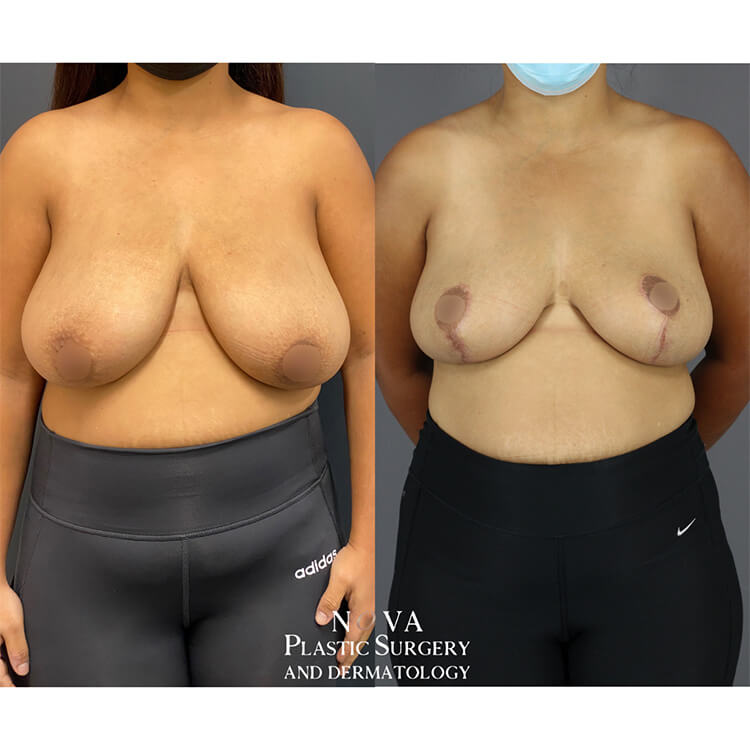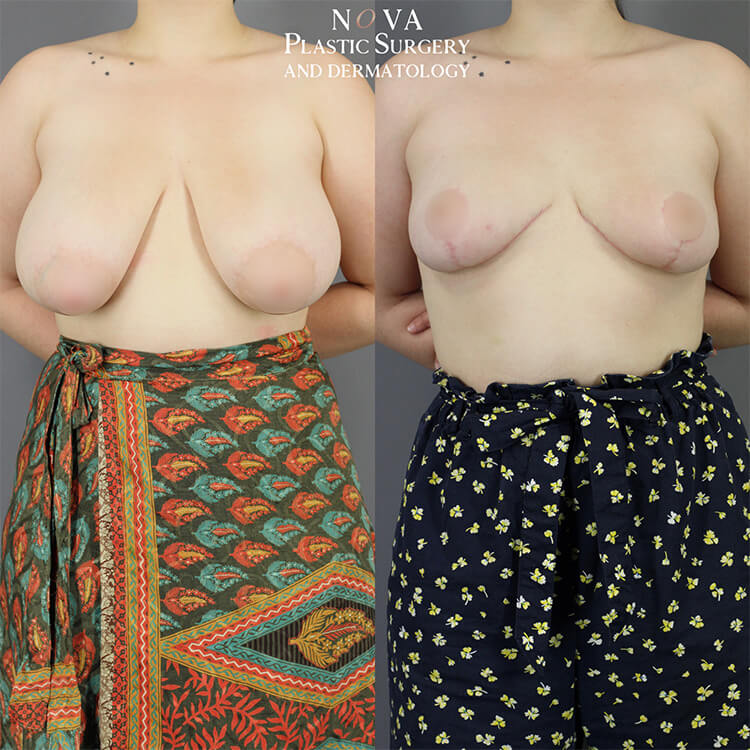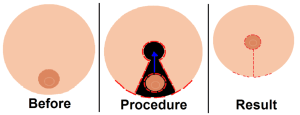

Breast Reduction

What is a Breast Reduction?
Breasts that are too large for your frame can cause physical pain in your back and shoulders, make it difficult to exercise, can make you feel your silhouette doesn’t look as you’d wish, and can make clothes shopping impossible. A breast reduction surgery will correct these issues by removing excess breast tissue and skin.
Why Get a Breast Reduction?
Disproportionately large breasts can cause a number of problems. You may have trouble finding shirts, bras, and bathing suits that fit. The skin under your breasts can become irritated, which adds to the pain in your back from carrying around the extra weight. Bra straps might dig into your shoulders. These are just the physical issues- many women with a large chest are self-conscious and feel worse about their appearance than they would if their breasts were more in proportion with the rest of their body.
A breast reduction will bring the size of your breasts into proportion with your frame. You won’t have to lose your hourglass figure, but your chest will become more manageable. The procedure will help alleviate both physical and emotional discomfort caused by your breast size.
Contact Us
Who is A Good Candidate for Breast Reduction?
The candidate should have a positive outlook and realistic expectations of the outcome of the surgery. She should be getting the procedure for her own personal reasons, and not to satisfy anyone else.
Candidates interested in the procedure usually have breasts large enough to cause physical discomfort and to inhibit their physical activity. She will probably have skin irritation both under the breasts and on the shoulders from tight bra straps. The breasts will hang low, and the nipples might hang below the breast crease. There might be stretch marks on the breasts, or abnormally large areola (the dark skin around the nipple).
A good candidate for a breast reduction often is emotionally weary of coping with the physical and stylistic limitations of large breasts. She will be prepared for and look forward to the changes in her body.
What Happens During My Consultation for a Breast Reduction?
The surgeon will evaluate the size and shape of your breasts, as well as your skin condition and muscle tone.
The surgeon will listen to your concerns about your breast size, and help you decide on what size you would like to be after surgery. He will go over the process of breast reduction surgery, including exactly how much tissue will be removed to reach your goal. You will also be given pre- and post-operative care instructions.

Before & After


How Do I Prepare?
You will need to stop smoking at least six weeks beforehand, and will stop eating and drinking at an instructed time the night before the surgery. The surgeon might have you stop taking any blood-thinning medications or herbal supplements about two weeks before your scheduled breast reduction. Your surgeon may ask you to get a pre-operative mammogram to detect any issues with the breasts before surgery.
Review any paperwork and post-operative instructions beforehand, and make sure you have cold compresses, your pain medication, and button-down shirts on hand at home. You will need to arrange to have someone drive you home after the procedure.
If you are not at your ideal weight, it’s a good idea to get as close to it as possible before the surgery. Gaining or losing large amounts of weight can affect your results after the procedure.
How is Breast Reduction Done?

Your surgeon will then make the incision in the manner discussed with you during your consultation. Prepare to be in surgery for between two and five hours.
The incision is generally around the areola, down to the breast crease, and then horizontal across the breast crease in each direction. The surgeon will use this incision to remove excess skin, breast tissue, and glandular tissue. The areola will be reduced in size and the areola and nipple will be repositioned. In general, the skin above the areola is moved around and below the areola so the nipple sits higher on the breast mound.
Once the breasts are newly shaped and the areola is in the correct position, the incision will be closed.

What is Recovery Like for a Breast Reduction?
There will be dressings covering the incision site, and some patients will have a surgical bra or other compression garment in place to help keep swelling down. The drains will be taken out after a few days, but you will need to continue wearing the support garment for several weeks as instructed by your surgeon.
There may be some increasing swelling, bruising, or discomfort in the two to three days after surgery. The surgeon will recommend medication to help with any tenderness, and the swelling should begin to go down after about three to ten days. During the first week after surgery, avoid bending over, lifting things, or wearing shirts you have to pull over your head.
Most patients can go back to work within one to two weeks. You will need to avoid strenuous physical activity for four to six weeks.
When Can I See My Final Results?
It can take up to six months for this to happen, and for the scars to begin to fade. The loss of the excess weight will have immediate effects on your physical comfort and your ability to exercise.
The new look of your breasts should last for several years; however, gravity and aging will affect the breast position. Becoming pregnant or altering your weight may also affect the surgical results by increasing breast size. If you become dissatisfied with your breast position, you may need to consider getting a breast lift.
What Are the Risks of Breast Reduction?
These risks include infection, bleeding, reactions to anesthesia, changes in skin sensation, skin discoloration, breast asymmetry, nipple asymmetry, nerve damage, loss of nipple sensation, dissatisfaction with the results, and the need for revisional surgery later.
Select a Board Certified Plastic Surgeon for your breast reduction-it’s one of the best ways to reduce the risk of complications. Board Certified surgeons have the training and expertise necessary to perform the procedure with meticulous attention to every detail. They use highly trained staff and the best medical facilities to help prevent complications from arising.
Following all your pre- and post-operative instructions will also help prevent complications. Your surgeon will discuss the risks with you in more detail at your consultation appointment.
